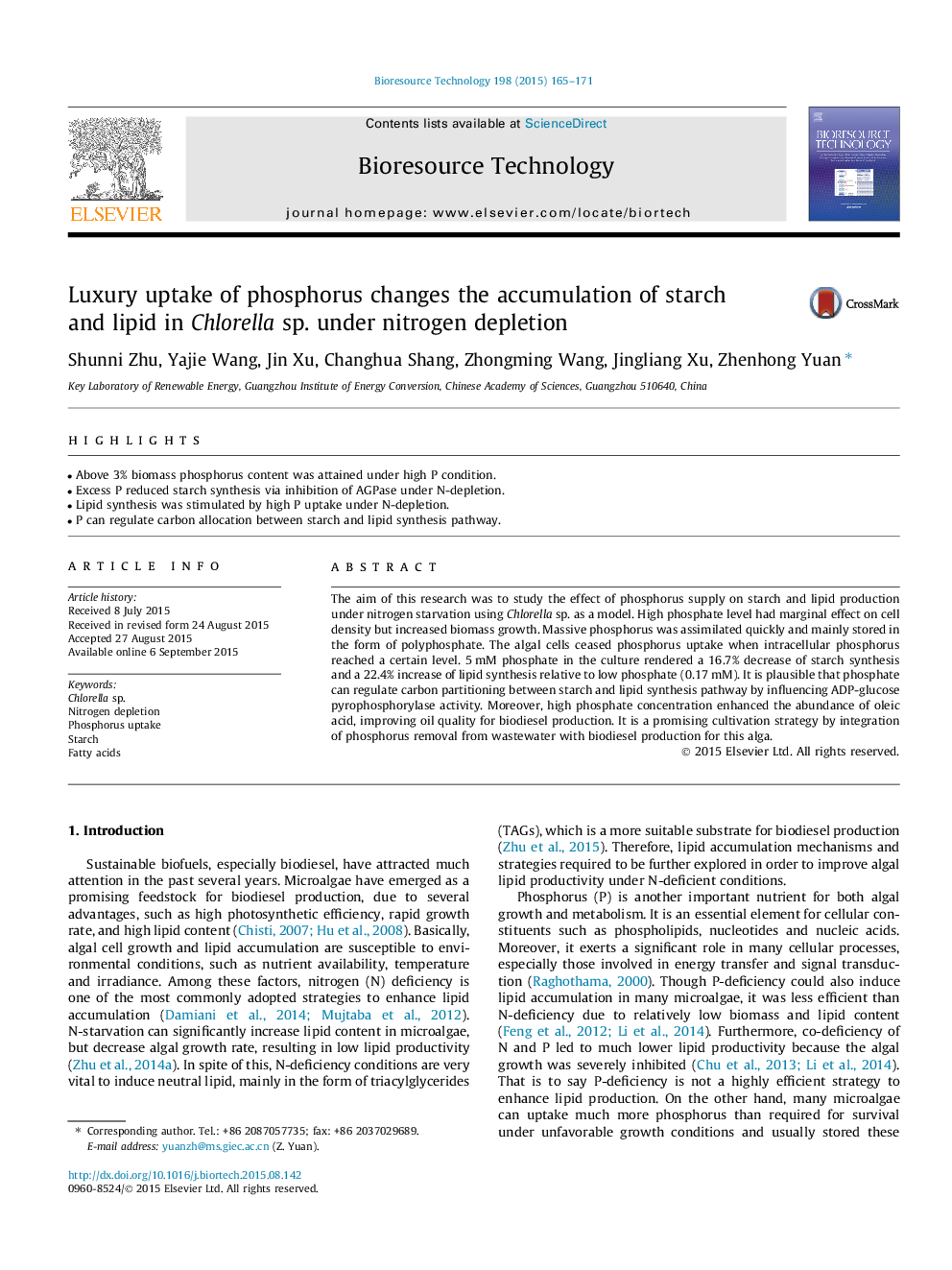| Article ID | Journal | Published Year | Pages | File Type |
|---|---|---|---|---|
| 679459 | Bioresource Technology | 2015 | 7 Pages |
•Above 3% biomass phosphorus content was attained under high P condition.•Excess P reduced starch synthesis via inhibition of AGPase under N-depletion.•Lipid synthesis was stimulated by high P uptake under N-depletion.•P can regulate carbon allocation between starch and lipid synthesis pathway.
The aim of this research was to study the effect of phosphorus supply on starch and lipid production under nitrogen starvation using Chlorella sp. as a model. High phosphate level had marginal effect on cell density but increased biomass growth. Massive phosphorus was assimilated quickly and mainly stored in the form of polyphosphate. The algal cells ceased phosphorus uptake when intracellular phosphorus reached a certain level. 5 mM phosphate in the culture rendered a 16.7% decrease of starch synthesis and a 22.4% increase of lipid synthesis relative to low phosphate (0.17 mM). It is plausible that phosphate can regulate carbon partitioning between starch and lipid synthesis pathway by influencing ADP-glucose pyrophosphorylase activity. Moreover, high phosphate concentration enhanced the abundance of oleic acid, improving oil quality for biodiesel production. It is a promising cultivation strategy by integration of phosphorus removal from wastewater with biodiesel production for this alga.
